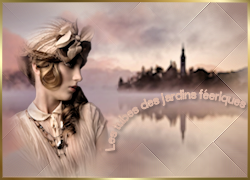-
Par Frawsy le 4 Novembre 2013 à 23:00
Les Indes au 19e siècle - Partie 2
Diljan, a bazaar woman in Saharanpur, Uttar Pradesh, India, circa 1870. (Photo by Hulton Archive/Getty Images)
Shawl workers in Kashmir, circa 1870. (Photo by Hulton Archive/Getty Images)
Thakur Tej Singh, a Hindu landowner of the Jat people from Allyghur, India, circa 1870. (Photo by Hulton Archive/Getty Images)
Oodassees, Sikh devotees or mendicants in Delhi, circa 1870. (Photo by Hulton Archive/Getty Images)
A Tibetan interpreter in Darjeeling, India, circa 1870. (Photo by Hulton Archive/Getty Images)
Pundit Aftab Rae, a Hindu priest or Brahmin, in Allyghur, India, circa 1870. (Photo by Hulton Archive/Getty Images)
Shair Ullee Syud, a Shia Muslim descendant of Mohammad, Allyghur, India, circa 1870. (Photo by Hulton Archive/Getty Images)
A man from the Kookie or Kuki robber tribes of Cachar, Assam, India, circa 1870. (Photo by Hulton Archive/Getty Images)
Kurrum Doss, a Hindu jogi or mendicant from Punjab, in Saharanpur, India, circa 1870. (Photo by Hulton Archive/Getty Images)
A Meeree or Miri hill tribesman from Assam, India, circa 1870. (Photo by Hulton Archive/Getty Images)
Duleep Singh, a Hindu from Kullianpur (Kalianpur), pictured in Allyghur, India, circa 1870. (Photo by Hulton Archive/Getty Images)
Jwahir Loll, a Hindu banker from Allyghur, India, circa 1870. (Photo by Hulton Archive/Getty Images)
A rope bridge at Rampur in India, circa 1870. (Photo by Hulton Archive/Getty Images)
Marwari cloth merchants in India, circa 1870. (Photo by Shepherd & Robertson/Henry Guttmann/Getty Images)
People who work as driers of manure with their wares piled up in baskets. Two balance piles of dried manure on their heads. (Photo by Hulton Archive/Getty Images). Circa 1875
His Highness, the Maharajah Holkar of Indore. (Photo by Fox Photos/Getty Images). 1877
His Highness the Maharajah of Jodhpur. (Photo by Hulton Archive/Getty Images). 1877
A young Kanchain woman, circa 1880. (Photo by Hulton Archive/Getty Images)
The soldiers of the Indian army who constitute the Viceroy of India's bodyguard. (Photo by Hulton Archive/Getty Images). Circa 1880
Indian princes and British Army officers in the Hyderabad contingent polo team. (Photo by Hulton Archive/Getty Images). Circa 1880
A young woman in Darjeeling, India. (Photo by Hulton Archive/Getty Images). Circa 1880
Sir G. Campbell's meeting with the King of Sikkim in Darjeeling. (Photo by Hulton Archive/Getty Images). Circa 1880
Polo players from Manipur in India prepare for a match, circa 1885. (Photo by Henry Guttmann/Hulton Archive/Getty Images)
An Indian Brahmin and his family. (Photo by Hulton Archive/Getty Images). Circa 1890
Muslim women in India. (Photo by Hulton Archive/Getty Images). Circa 1890
A Maharajah's tennis party at Kapurtha during the British Raj. (Photo by Hulton Archive/Getty Images). 1890
An elephant battery of the Indian Army in Secunderabad, India, 1896. (Photo by Henry Guttmann/Hulton Archive/Getty Images)
His Highness the Rajah Sahib of Alwar (1882–1937). (Photo by Hulton Archive/Getty Images). Circa 1897
Sir Shri Umaid Singhji Jodhpur, the Maharajah of Jodhpur, India. (Photo by Hulton Archive/Getty Images). 1897
Prince Victor Duleep Singh, Prince of India at a fancy dress ball at Devonshire House as the Emperor Akbar, the Mogul emperor. (Photo by Hulton Archive/Getty Images). July 1897 votre commentaire
votre commentaire
-
Par Frawsy le 4 Novembre 2013 à 22:56
Les Indes au 19e siècle - Partie 1
Two uniformed soldiers of the Indian army. (Photo by Otto Herschan/Getty Images). Circa 1850
The jirkuz of the Raja of Kapurthala during the Indian Mutiny, 1857. (Photo by Felice Beato/Hulton Archive/Getty Images)
“Colonel Brayzier”, an Indian soldier during the Indian Mutiny, 1857. (Photo by Felice Beato/Hulton Archive/Getty Images)
Warriors of the Indian Hindu Rajput caste, 1857. (Photo by Henry Guttmann/Hulton Archive/Getty Images)
One of the Indian soldiers who assisted the British in suppressing the Indian Mutiny of 1857–1859, when the sepoys of the Bengal army formed a rebellion. (Photo by Henry Guttmann/Getty Images). Circa 1857
The Chutter Munzil Palace wall in Lucknow, India, which was destroyed by mutineers. In the foreground is the king's boat in the shape of a fish. (Photo by Felice Beato/Getty Images). 1857
A group of Sikh sappers (combat engineers) of the Indian Army, 1858. (Photo by Felice Beato/Hulton Archive/Getty Images)
Sikh officers of the British 15th Punjab Infantry regiment, shortly after the Indian Rebellion (also known as the Indian Mutiny), 1858. (Photo by Felice Beato/Hulton Archive/Getty Images)
A Mogul family in Delhi, 1858. (Photo by Shepherd & Robertson/Henry Guttman/Getty Images)
Sir Drigbijai Singh, Maharajah of Balrampur, 1858. The Maharajah was one of the Indian princes to remain loyal to the British during the Indian Rebellion (also known as the Indian Mutiny) of 1857. (Photo by Felice Beato/Hulton Archive/Getty Images)
Afghan Sikh Officers of Hodson's Horse, a cavalry regiment of the British Indian Army, during the Indian Rebellion, 1858. (Photo by Felice Beato/Getty Images)
Begum Zenat Mahat, Wife of the Shah or King of Delhi, exiled to Rangoon after the Indian mutiny against British rule in 1857. (Photo by Felice Beato/Getty Images)
A group of Muhammadan women from Surat standing by a wall in Bombay. The three women are wearing everyday middle-class attire. (Photo by Hulton Archive/Getty Images). 1863
Colonel Alexander Gardner, Commander of the Maharajah's troops in Kashmir, India, circa 1864. (Photo by Bourne & Shepherd/Hulton Archive/Getty Images)
A young Pathan or Pashtun woman, circa 1865. (Photo by Hulton Archive/Getty Images)
A young Indian woman in Bombay, circa 1865. (Photo by Hulton Archive/Getty Images)
An aboriginal man from the Lepcha people of Sikhim (Sikkim), India, circa 1868. (Photo by Hulton Archive/Getty Images)
A Rengma man from the Naga hill tribes in Assam, India, circa 1868. (Photo by Hulton Archive/Getty Images)
From left to right: A Gurkha, a Brahmin and a Sood (Sudra) in traditional garb in Simla. (Photo by Hulton Archive/Getty Images). Circa 1868
The Viceroy of India, 6th Earl of Mayo (1822–1872), receives Sher Ali Khan (1825–1879), Amir of Afghanistan, at Ambala, India, 27th March 1869. (Photo by Hulton Archive/Getty Images)
An Indian ascetic wearing an iron collar, circa 1870. (Photo by Hulton Archive/Getty Images)
A Sunnyasi Brahmin in India, circa 1870. (Photo by Hulton Archive/Getty Images)
A group of bankers in Delhi, circa 1870. (Photo by Shepherd & Robertson/Henry Guttmann/Getty Images)
A rope merchant in India, circa 1870. (Photo by Hulton Archive/Getty Images)
His Highness Chama Rasendra Wadiar Bahadur, the maharajah of Mysore. (Photo by Henry Guttmann/Getty Images). 1870
The attendants of the Sumptha Raja, Agra Durbar. (Photo by Hulton Archive/Getty Images). 1873
A valet in India, circa 1870. (Photo by Hulton Archive/Getty Images)
A water carrier or “bhisti” in India, circa 1870. (Photo by Hulton Archive/Getty Images) votre commentaire
votre commentaire
-
Par Frawsy le 3 Novembre 2013 à 22:08
Le dernier tsar de la Russie - Nicolas II
Nicolas II de Russie (en russe : Николай Александрович Романов, Nikolaï Aleksandrovitch Romanov), de la dynastie des Romanov, né le 18 mai 1868 (6 mai 1868 C. J.) au palais de Tsarskoïe Selo et assassiné avec toute sa famille le 17 juillet 1918 à Ekaterinbourg, est le dernier empereur de Russien, roi de Pologne et grand-prince de Finlande.
Nicolas II est tsar de toutes les Russies, de 1894 à 1917. Il connaît de nombreux surnoms suivant les époques : « Nicolas le Pacifique », du temps de son règne, puis les Soviétiques le baptisent « Nicolas le Sanguinaire », mais de nos jours la tradition populaire orthodoxe le décrit comme « un saint digne de la passion du Christ ».
Son règne et celui de son père correspondent à l'époque du plus grand essor dans l'histoire de la Russie des points de vue économique, social, politique et culturel. Les serfs sont libérés pendant le règne de son grand-père Alexandre II et les impôts sont allégés. Piotr Stolypine réussit à développer une classe de paysans riches, les koulaks. La population triple et la Russie, avec 175 millions d'habitants, devient la troisième ou quatrième puissance économique mondiale et possède le premier réseau ferroviaire après les États-Unis. Le rouble devient une monnaie convertible et outre un nombre important de marchands et d'industriels, l'Empire possède désormais ses propres financiers. Ils sont souvent des mécènes. La Russie prend, du temps de Nicolas II, la deuxième place dans le domaine de l'édition de livres. De nouvelles universités, des écrivains, sculpteurs, peintres, danseurs... sont à l'époque connus dans le monde entier. Selon Alexander Gerschenkron, « nul doute qu'au train où croissait l'équipement industriel pendant les années du règne de Nicolas II, sans le régime communiste, la Russie eût déjà dépassé les États-Unis ».
Nicolas II gouverne de 1894 jusqu'à son abdication en 1917. Il ne réussit pas à mettre fin à l'agitation politique de son pays ni à mener les armées impériales à la victoire pendant la Première Guerre mondiale. Son règne se termine avec la révolution russe de 1917, pendant laquelle lui et sa famille sont emprisonnés d'abord dans le palais Alexandre à Tsarskoïe Selo, puis plus tard dans la maison du gouverneur à Tobolsk, et finalement dans la villa Ipatiev à Ekaterinbourg. Nicolas II, son épouse, son fils, ses quatre filles, le médecin de famille, son domestique personnel, la femme de chambre et le cuisinier seront ensuite assassinés par les bolcheviks dans la nuit du 16 au 17 juillet 1918.
Wikipédia
The Empress Maria Fyodorovna of Russia, (1847–1928), (left), her husband Tsar Alexander III, (1845–1894), and their children. In the group are Tsar Nicholas II, (1868–1918), as Tsarevich, Grand Duke Michael, Grand Duke George, Grand Duchess Xenia, and Grand Duchess Olga. (Photo by Hulton Archive/Getty Images). Circa 1890
Tsar Nicholas II of Russia (1868–1918). (Photo by Henry Guttmann/Getty Images). Circa 1890
Nicholas II, the last Emperor of Russia, visits England for the wedding of King George V and Queen Mary. (Photo by Mullins/Keystone/Getty Images). 6th July 1893
Victoria, Queen of Great Britain, at Balmoral Castle in Scotland, with her son Edward, Prince of Wales (right), and Tsar Nicholas II of Russia (left). Seated on the left is Alexandra, Tsarina of Russia, holding her baby daughter Grand Duchess Tatiana. (Photo by Hulton Archive/Getty Images). UK, 1896
Tsar Nicholas II (1868–1918) with his wife. (Photo by W. & D. Downey/Getty Images). Circa 1900
Wilhelm II of Germany (1859–1941) riding through the streets of Berlin with Tsar Nicholas II. (Photo by Henry Guttmann/Getty Images). Circa 1900
Tsar Nicholas II of Russia. (Photo by Hulton Archive/Getty Images). 1900
Tsar Nicholas II, Emperor of Russia. (Photo by Topical Press Agency/Getty Images). Circa 1905
Tsar Nicholas II (1868–1918) of Russia and his wife Alexandra (1872–1918). (Photo by Hulton Archive/Getty Images). 1905
Alexis, Tsarevich of Russia, (1904–1918), the son of Nicholas II, Emperor of Russia. (Photo by Hulton Archive/Getty Images). Circa 1910
Prince Edward of Wales (later the Duke of Windsor) with Tsar Nicholas II, Tsarevich Alexei and Prince George of Wales (later George V) at Cowes. (Photo by Keystone/Getty Images). Circa 1910
The Grand Duchess Anastasia of Russia, centre, daughter of the last Tsar of Russia Nicholas II and the Tsarina Alexandra, with her sisters and brother. From left, the Grand Duchesses Marie, Tatiana, Anastasia and Olga, and the Tsarevich Alexis. (Photo by Hulton Archive/Getty Images). 1910
Grigory Yefimovich Rasputin (1871–1916) peasant, mystic and self styled holy man who had a magnetic influence over Alexandra and her husband, Tsar Nicholas II is in the midst of a group of his followers. (Photo by Topical Press Agency/Getty Images). Circa 1911
Kaiser Wilhelm II of Germany (1859–1941), with Tsar Nicholas II of Russia (1868–1918). (Photo by General Photographic Agency/Getty Images). Circa 1913
The four daughers of Nicholas II, Emperor of Russia. From left, Grand Duchess Marie (1899–1914), Grand Duchess Tatiana (1897–1918), Grand Duchess Anastasia (1901–1918), and Grand Duchess Olga (1895–1918). All lost their lives at Ekaterinburg. (Photo by Hulton Archive/Getty Images). 1914
Tsar Nicholas II of Russia (1868–1918) with King George V of England (1865–1936), both in full military regalia. (Photo by Hulton Archive/Getty Images). 1914
Tsarina Alexandra Feodorovna, wife of Tsar Nicholas II, and her son the Tsarovitch who is playing with her pearls. (Photo by Hulton Archive/Getty Images). 1915
Nicholas II, emperor of Russia (1868–1918), Supreme Commander of the Russian Army and Navy, with his son, Grand Duke Alexis (1904–1918), honorary chief of the Corps of Naval Cadets. The Tsar was forced to abdicate in March 1917. (Photo by Hulton Archive/Getty Images). Circa 1916
Tsar Nicholas II of Russia with members of his family in the private grounds of Tsarskoe Selo, the summer palace. From left to right: an officer attending on the Emperor, Nicholas II, Grand Duchess Tatiana, Grand Duchess Olga, Grand Duchess Marie, Grand Duchess Anastasia and (in front of them) Tsarevich Alexis. The four boys on the right are Prince Nikita, Prince Rostislav, Prince Dmitri and Prince Vasili Alexandrovitch, sons of the Emperor's eldest sister Grand Duchess Xenia Alexandrovna. (Photo by Topical Press Agency/Getty Images). 1916
Tsar Nicholas II with Alexis, the Tsarevich, Grand Duchess Tatiana and his nephew Prince Nikita. (Photo by Topical Press Agency/Getty Images). 1916
Nicholas II (1868–1918), the last Tsar of Russia, sits in the woods around the time he was forced to abdicate. He and his family were shot by the Red Guards the following year. (Photo by Hulton Archive/Getty Images). 1st March 1917
Tsar Nicholas II and his children sitting on the roof of a conservatory during their captivity in Tobolsk, from September 1917 to April 1918. From left to right: Grand Duchesses Olga and Anastasia, Tsar Nicholas and the Tsarevich, and Grand Duchesses Tatiana and Marie. (Photo by Hulton Archive/Getty Images). 1918 1 commentaire
1 commentaire
-
Par Frawsy le 3 Novembre 2013 à 21:56
Guerre civile espagnole
La guerre d'Espagne (souvent également désignée sous le nom de guerre civile espagnole) est un conflit qui, du 17 juillet 1936 au 1er avril 1939, opposa, en Espagne, le camp des républicains, composé de loyalistes à l'égard du gouvernement légalement établi de la IIe République, et les nationalistes, un groupe de rebelles putschistes orienté à droite mené par le général Francisco Franco. Cette guerre se termina par la victoire des nationalistes qui établirent une dictature qui dura 36 ans, jusqu'à la transition démocratique qui n'intervint qu'à la suite de la mort de Franco. Cette guerre fut la conséquence, sur le long terme, des malaises sociaux, économiques, culturels et politiques qui accablaient l'Espagne depuis plusieurs générations. Après la proclamation de la IIe République en 1931, l'exacerbation croissante des tensions entre Espagnols culmina avec l'insurrection durement réprimée des Asturies (1934) et la résurgence de troubles civils et de violences réciproques au printemps 1936, après la victoire électorale du Frente Popular. Préparé de longue date, le soulèvement militaire et civil du camp nationaliste éclata le 18 juillet 1936, mais sa mise en échec partielle déboucha sur une guerre civile imprévue, longue et meurtrière.
Le conflit prit aussi la forme, dans certains territoires sous contrôle républicain, d'une révolution sociale originale qui aboutit à la collectivisation des terres et des usines, et expérimenta différentes sortes d'organisation de type socialiste (soutenues notamment par des anarchistes de la CNT).
Wikipédia
Girl snipers, fighting for the government, during the Spanish Civil War. (Photo by Keystone/Getty Images). 1936
Refugees from the Spanish Civil War crowd the roads to Perpignan at Le Perthus, France. (Photo by Three Lions/Getty Images). 1936
One of 17 volunteers who fell during an attack in the Spanish Civil War. He was shot in the head. (Photo by Three Lions/Getty Images). 1936
A Spanish government soldier throws a hand grenade towards enemy trenches during the Spanish Civil War. (Photo by Keystone/Getty Images). 1936
Journalist Raymond Walker risks his life under a hail of bullets dashing across the International bridge from Hendaye, France, to Irun, Spain to save a baby, during the Spanish Civil War. (Photo by Horace Abrahams/Getty Images). 1936
A group of Loyalist Republican Spanish soldiers at the time of the Spanish Civil War. (Photo by Three Lions/Getty Images). 1936
Soldiers read posters in Barcelona calling women to arms during the Spanish Civil War. (Photo by Fox Photos/Getty Images). 1936
Women were among the Republican combatants during the Spanish Civil War. (Photo by Fox Photos/Getty Images). 1936
After a successful attack, Nationalist troops capture communist troops entrenched on the crest of a hill on the Somosierra front, during the Spanish Civil War. (Photo by Horace Abrahams/Getty Images). 1936
Nationalist troops loyal to General Franco advance, bayonets fixed, through the debris of houses at Madrid wrecked in air raids during the Spanish Civil War. (Photo by Hulton Archive/Getty Images). 1937
Republican forces lying in ambush in a village near Madrid during the Spanish Civil War. (Photo by Hulton Archive/Getty Images). 1937
Nationalist troops escorting a group of captured Republican troops on the Samosierra front during the Spanish Civil War. (Photo by Keystone/Getty Images). 1936
Bodies of children awaiting burial after a Nationalist air raid on their school at Barcelona during the Spanish Civil War. (Photo by Keystone/Getty Images). 1937
Victims of a sudden air raid lie in a street during the Spanish Civil War. (Photo by Central Press/Getty Images). 1937
Republican and irregular loyal troops in Barcelona awaiting orders to advance to the Saragossa front during the Spanish Civil War. (Photo by Fox Photos/Getty Images). 1936
Scenes of destruction along the roads leading from Franco's Spain during the height of the Spanish Civil War. (Photo by Three Lions/Getty Images). 1936
The Fifth Division of Replacements arrive and give the word that the troops of Navarre have come to fight in the Spanish Civil War. (Photo by Three Lions/Getty Images). Circa 1936
Crowds cheering government troops in Pamplona during the Spanish Civil War. (Photo by Central Press/Getty Images). 28th August 1936
A militiaman chats with a woman in the doorway of her home in Extremadura or Estremadura in west central Spain, during the Spanish Civil War. The villagers have only recently been allowed to return to their homes in the area. (Photo by Keystone/Getty Images). 1936
General Franco's Falangist troops watch a man being carried past on a stretcher after their successful capture of the city of Getafe. Although only seven miles from Madrid, they would not take the capital until March 1939, marking the end of the Spanish Civil War. (Photo by Horace Abrahams/Keystone/Getty Images). 10th November 1936
The Republican army make their way through Barcelona in home-made armoured vehicles, during the Spanish Civil War. (Photo by Fox Photos/Getty Images). August 1936
A member of the French frontier troops helps a family of refugees cross the border from Spain during the Spanish Civil War. (Photo by Keystone/Getty Images). Circa 1938
News reporters mingling with members of the International Brigade during the Spanish Civil War. Amongst them is American novelist and journalist Ernest Hemingway (1899–1961) (far right). (Photo by London Express/Getty Images). Circa 1937
Residents of Gibraltar and Spanish refugees watch the bombardment of Algeciras. (Photo by Fox Photos/Getty Images). 10th August 1936
Soldiers digging roads in the Guadarrama Mountains during the Spanish Civil War. (Photo by Fox Photos/Getty Images). 19th September 1936
A wounded Republican soldier being treated at a field dressing station on the Guadarrama front near Madrid. (Photo by Ward/Fox Photos/Getty Images). 9th September 1936
Workmen paint a Union Jack flag on the roof of the British Embassy in Madrid, during the height of the siege by rebel troops. (Photo by Fox Photos/Getty Images). 8th September 1936
Republican militia men searching through the wreckage of their barracks in Madrid after it was bombed by rebel planes. (Photo by Fox Photos/Getty Images). 8th September 1936 votre commentaire
votre commentaire
-
Par Frawsy le 3 Novembre 2013 à 16:55
Les Tibétains
Two Tibetan women wearing traditional striped aprons, elaborate headdresses and abundant jewellery. Original Publication: From a photograph by Shephard. (Photo by Hulton Archive/Getty Images). Circa 1910
A Tibetan grandfather begs for alms or food for his family in a scene from an unknown film. (Photo by General Photographic Agency/Getty Images). Circa 1925
Monks using woodwind instruments to sound midday on a rooftop at the Potala Palace, Lhasa, official residence of the Dalai Lama. (Photo by Obrazove Zpravobajstvi/Three Lions/Getty Images). Circa 1955
A young member of the Tibetan aristocracy dressed from head to toe in ornate jewellery and ceremonial clothing. (Photo by Three Lions/Getty Images). Circa 1925
A young Tibetan girl in traditional dress, her hair plaited into 108 braids, or as close as possible, to represent the 108 volumes of Tibetan holy book the Kan Djur. (Photo by Three Lions/Getty Images). Circa 1950
Tibetan monks playing long trumpets at the Festival of Kanchenjunga in Tibet. (Photo by Keystone/Getty Images). 2nd April 1959
Two men dressed in elaborate Tibetan costume with head dresses, embroidered coats and pointed slippers. (Photo by Hulton Archive/Getty Images). Circa 1900
Three women from Sikkim, the northern Indian state which borders with Tibet, wearing traditional clothing. (Photo by Dr Ulrich Mohr/Keystone/Getty Images). 2nd April 1959
Lama dancers and musicians who took part in a pageant in Calcutta in honor of the Prince of Wales' visit to the city. (Photo by Topical Press Agency/Getty Images). January 1922 votre commentaire
votre commentaire Suivre le flux RSS des articles de cette rubrique
Suivre le flux RSS des articles de cette rubrique Suivre le flux RSS des commentaires de cette rubrique
Suivre le flux RSS des commentaires de cette rubrique
La Tigresse au coeur tendre






















 Twitter
Twitter del.icio.us
del.icio.us Facebook
Facebook Digg
Digg Technorati
Technorati Yahoo!
Yahoo! Stumbleupon
Stumbleupon Google
Google Blogmarks
Blogmarks Ask
Ask Slashdot
Slashdot

























































































































